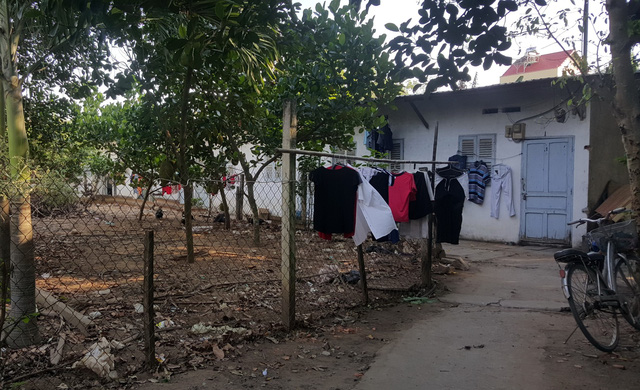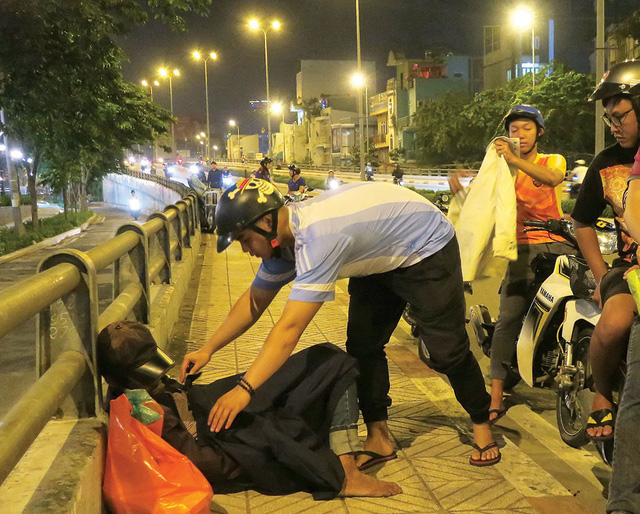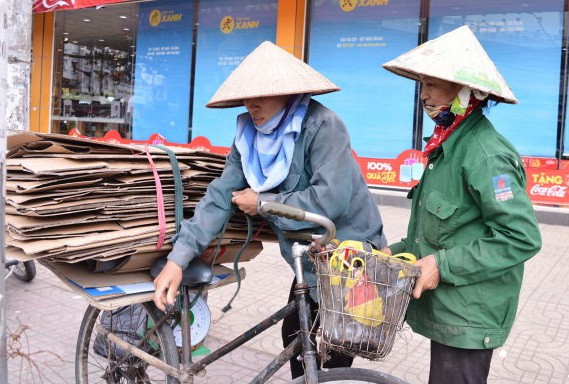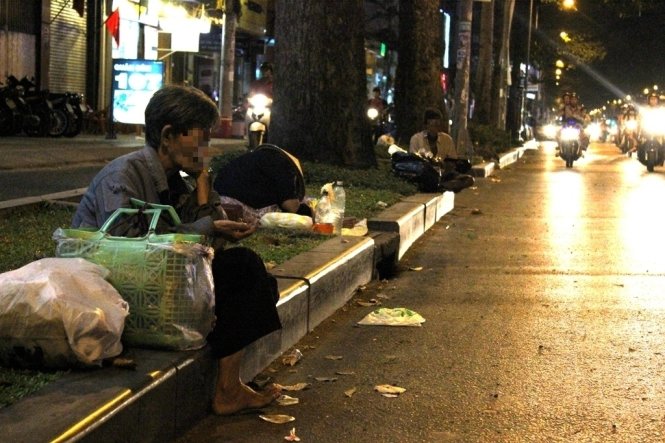Editor’s note: Dr. Nguyen Minh Hoa believes that something should be done in order to stop people from migrating to Saigon, as the ‘promised land’ has become increasingly overcrowded to receive them all.
As in the previous years, when the Lunar New Year is drawing near, I join my family members and my students to gather used clothes and bring them to internal migrants, to those homeless people who have to live on sidewalks across Saigon.
Saigon is without a doubt a city of generosity where people are willing to help and share the hardship of those in need, and it is surely a ‘promised land,' but this land will inevitably become too crowded for everyone.
What’s the point of flocking to a ‘promised land’ when everyone will share nothing but poverty, once there is little space for growth?
The best solution is to keep the migrants-to-be where they are, and Saigon, on its way to achieve prosperity, will never forget those needy people.
 |
| A series of rented houses for internal migrants are seen in Binh Chanh District, outside Ho Chi Minh City. Photo: Tuoi Tre |
Empty-handed and homeless
As the cold weather this year was much more biting than in previous years, less homeless people had chosen to spend the night at the doorsteps of others. Instead, they would flock to bridges citywide such as Kieu, Thu Thiem and Chu Y for shelter.
Some said they had to do so, because people no longer allowed them to sleep in front of their houses, while others said it is easier to meet charity groups when sheltering under or on a bridge.
 |
| Members of a charity group give a warm blanket to a homeless man sleeping on a bridge in Ho Chi Minh City. Photo: Tuoi Tre |
This year we met some old faces, who have grown much older and physically weaker after years of living in the street. And yet, some faces were missing, having succumbed to their diseases. Compared to previous years, it seems there are more homeless people in Saigon now.
Last year saw many fierce storms hitting the central region, which left numerous households empty-handed. The storms stripped away those households’ means of earning a livelihood, as agricultural land areas and crops were destroyed. They had no choice but to move to Saigon to make ends meet.
Some of the families living under the bridges that we have met are from the Mekong Delta, meaning climate change is also hitting people in the region once known as “the land where you find fish in every drop of water.”
Vietnam has become an average-income country, with a GDP per capita of more than US$2,300 a year, but it is clearly visible that the gap between the rich and the poor keeps widening, while the difference between the rural and urban areas is insignificantly narrowed.
In the central region, there are still many families who do not have a stable food supply, and the number of poor and nearly-poor households remains worryingly high.
People in the central region never cease to escape from poverty. While they treasure every of their gains, they are only one storm away from becoming empty-handed, as all fortunes saved for years would go with the wind whenever a typhoon makes landfall in the region.
 |
| Two internal migrants who work as scrap collectors are seen in Ho Chi Minh City. Photo: Tuoi Tre |
What they need is a solid house
After every natural disaster, the number of internal migrants to Hanoi, Da Nang and Ho Chi Minh City would spike unusually, putting even more pressure on the already overloaded infrastructure and society in those big cities.
Ho Chi Minh City has annually added 1,500 to 1,800 new classrooms in such districts as Go Vap, Binh Chanh, Binh Tan, Hoc Mon and Cu Chi over the last few years, but still fails to meet the demand. The city has also built new bridges and has put expanded roads to use every year, but traffic congestion never ceases to exist.
Albeit already too late, it is high time the government started to develop an efficient breakthrough strategy in order to support people in the areas most prone to storms in the central region.
 |
| A market is seen in the aftermath of a storm in December 2017 in Nha Trang, south-central Vietnam. Photo: Tuoi Tre |
Instant noodles or clothes are all precious aids, but what people are in need most is a house, which does not need to be big (about 20 square meter is good) but should be extremely solid and safe, for them to store their fortune and food. Is this a difficult thing to do? Yes, but that does not necessarily mean it is impossible.
On top of direct support from the government, we should call for donations and contributions from businesses and members of the public countrywide. We should believe that no one would say no to such a call for good deeds.
I know the architecture and construction community in Ho Chi Minh City is ready to launch a contest to design special houses for people in flood-prone areas.
Providing those people with a solid house that can survive floods will put them at rest to stay in their homeland.
After a typhoon has been through their crops may be destroyed, but their houses will still be there and this will be all enough for them to start everything afresh.
 |
| A woman stands amid the wreckage of her house, following a storm's landfall in December 2017 in Nha Trang, south-central Vietnam. Photo: Tuoi Tre |
Without a sustainable place to live, this scenario will repeat itself every year: a typhoon strikes and people across the country are encouraged to donate instant noodles or money to those affected.
Considering that 12-15 storms hit central Vietnam a year, why don’t we just give them aid once but actually help them forever, instead of giving several small donations every year?
Have anything to add to Hoa’s story? Comment below or email to ttn@tuoitre.com.vn.
Like us on Facebook or follow us on Twitter to get the latest news about Vietnam!



















































